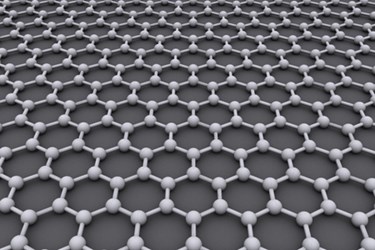First-Ever Graphene Rubber Bands Could Revolutionize Remote Healthcare
By Chuck Seegert, Ph.D.

Silicon-based strain and motion sensors are extremely effective in certain applications, but when it comes to soft tissues and joints with extreme range of motion, they don’t fit the bill. Now, for the first time, a team at the University of Surrey in the U.K. has developed a material that could conquer these applications — graphene rubber bands.
There are a number of reasons in the healthcare field to monitor human body motion, including the remote study of respiration or even how far joints are moving after surgery. To do this with today’s technology, however, is not cost-effective. In order to monitor human body motion effectively, a material needs to be inexpensive, lightweight, mechanically compliant, and possess reasonable sensitivity at high elongation and strain rates.
To meet this challenging set of criteria, researchers at the University of Surrey have developed graphene-infused rubber bands.
"Until now, no such sensor has been produced that meets these needs. It sounds like a simple concept, but our graphene-infused rubber bands could really help to revolutionise remote healthcare — and they’re very cheap to manufacture," said Dr. Alan Dalton from the University of Surrey in a recent press release.
To fabricate these unique sensors, the researchers used a two step process that is detailed in a recent article published in ACS Nano. The first step involved a liquid exfoliation of graphene, which led to large quantities of defect-free graphene flakes. Next, natural, rubber-based elastic bands were soaked in toluene, which caused the polymer to swell and opened pores in the material. With the pores open, the graphene flakes were capable of diffusing into the rubber where it was neatly captured inside the material. Once in place, the graphene component facilitated conduction through the rubber band, making it an electrical component that could interface with other electronics.
Once infused, the rubber bands retained their flexibility and were shown in the ACS Nano study to be excellent strain sensors. Some key results included their ability to work at up to 800 percent strain, as well as being able to monitor 6 percent strain at rates of up to 6000 percent/second. These properties not only allowed the graphene sensors to monitor joint and muscle motion, but also monitor finer bodily motions like breathing and pulse.
"These sensors are extraordinarily cheap compared to existing technologies. Each device would probably cost pennies instead of pounds, making it ideal technology for use in developing countries where there are not enough medically trained staff to effectively monitor and treat patients quickly," said corresponding author, professor Jonathan Coleman from Trinity College, Dublin, in the press release.
Development of wearable strain sensors is an area of intense investigation. In addition to graphene, silver nanowire technologies are being evaluated, as well. 3D printing technologies have also shown promise for cardiac applications.
Image Credit: “Graphene.” AlexanderAlUS. CC BY-SA 3.0: http://creativecommons.org/licenses/by-sa/3.0/
